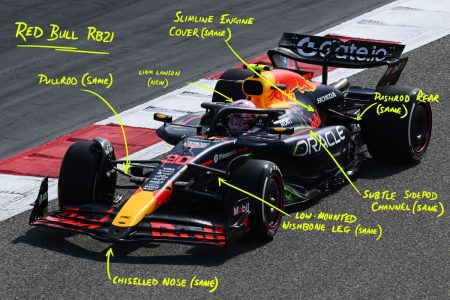Drive to Survive: The Impact on Formula 1
The latest season of "Formula 1: Drive to Survive" is set to drop on Friday, March 7, and the teasers and trailers have fans on the edge of their seats. The series, which has become a global sensation, has had a profound impact on Formula 1, its audience, and the broader media landscape. Here, we delve into the various perspectives on this phenomenon.
A New Audience, but Not Without Controversy
The series has undeniably reeled in a new, younger, and more diverse audience. Fans, sponsors, and manufacturers are eager to be part of the championship, hoping to benefit from the wave of interest sparked by the Netflix docuseries. However, for those deeply entrenched in the world of F1, the series has been a mixed bag. The dramatization of events has often caused consternation among the core audience, who feel that the series overly manipulates real-life events for entertainment.
Jake Boxall-Legge, a longtime F1 observer, points out that while the series has boosted the sport’s popularity, it sometimes falters in its portrayal of events. For those in the know, it’s clear that certain situations are manufactured, and crucial moments are often dramatized. The editing process, which reorders radio messages and dramatizes mundane activities, has been a source of frustration for many drivers. The core argument is that F1 is inherently dramatic, and there’s no need to artificially create storylines. Yet, the series often seems to overlook the real-life drama in favor of pre-ordained narratives.
A Post-Truth Docudrama
Stuart Codling offers a different perspective, drawing a parallel between "Drive to Survive" and the post-truth era. He likens the series to Michael Winterbottom’s film "24 Hour Party People," which playfully acknowledges its departure from objective truth. "Drive to Survive" is a fictionalized version of real events, ruthlessly reassembled in the edit suite to create a continuous stream of excitement. The series creates a parallel-world F1 where every race is a thrilling spectacle, often at the expense of factual accuracy.
Codling argues that the series is perfect for an era where people are accustomed to debating the veracity of events. The series often includes dramatized scenes that never happened, and it frequently manipulates the tone and context of events. This approach has been both praised for its entertainment value and criticized for its lack of integrity. The question of whether the series is entertaining enough is a central theme, reflecting the broader cultural shift towards a post-truth media landscape.
A Boom in Popularity, but a Headache for Journalists
While "Drive to Survive" has been a boon for F1’s global popularity, it has also created significant headaches for the media. Ben Hunt, a seasoned F1 journalist, highlights the issues that have arisen from the series’ filming and editing processes. When filming began, many in the paddock were asked to sign a waiver allowing their faces and voices to be used in the show. However, the extent of the filming quickly became a concern.
Journalists, who often generate the off-track storylines, found themselves under constant surveillance. Private conversations and interviews were frequently recorded without their knowledge. This intrusion into personal and professional discussions has been a significant issue, leading to a sense of invasion of privacy. Hunt also notes that the series often includes items without context, leading to negative reactions from viewers. For instance, he received abuse after a frank discussion with Mercedes boss Toto Wolff, where the context of their exchange was not provided to the audience.
The Journalistic Dilemma
The lack of transparency in the series’ content creation process has also been a point of contention. While teams have the right to review and remove some content, individual journalists do not have the same protection. This has led to instances where journalists are held accountable for content they did not control. The integrity of the storylines presented in the series is frequently questioned, but there is no single figure held responsible for these inaccuracies.
A New Fanbase, but at What Cost?
Despite these issues, the series has undeniably opened up a massive new fanbase for F1. The younger, more diverse audience that the series has attracted is a significant positive outcome. However, the downside is the impact it has had on the working environment for journalists and the integrity of the sport’s narrative. The series’ success in boosting F1’s popularity is undeniable, but it has also introduced new challenges and tensions within the community.
Conclusion: The Future of F1 and Drive to Survive
As "Formula 1: Drive to Survive" continues to grow in popularity, the balance between entertainment and integrity remains a crucial issue. The series has brought a new wave of fans to the sport, but it has also raised questions about the authenticity of its content. For those in the F1 community, the series is a double-edged sword, offering both opportunities and challenges. As the series enters its latest season, the debate over its impact on the sport and its audience will likely continue to evolve.











